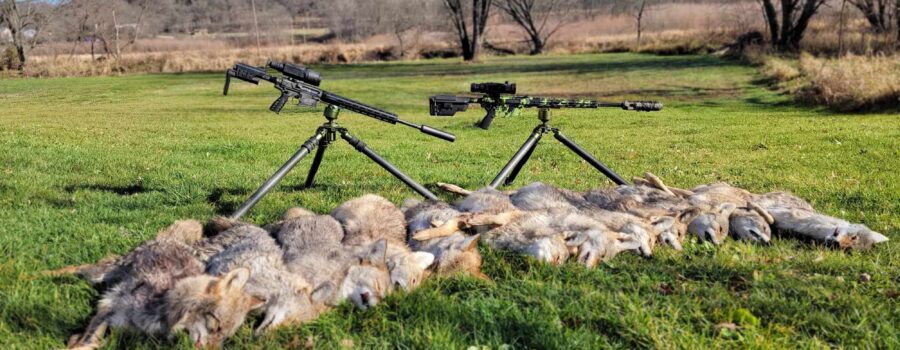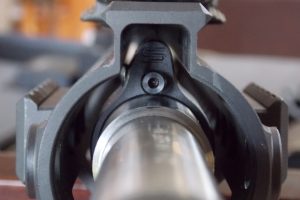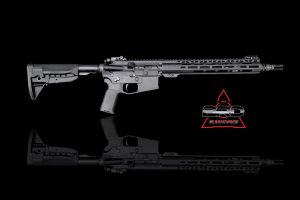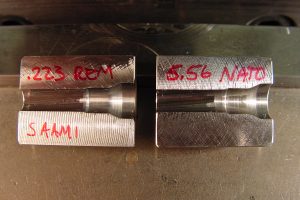There are a lot of hotly debated topics that surround hunting rifles. I should say, rifles in general. Carbon fiber barrels and components. Barrel length. Suppressors. Velocity vs the use of higher BC bullets. “Cool looking” components that don’t contribute to enhanced performance, but typically have a negative effect. These are a few, but one that I’m consistently confronted with when talking to clients is the big one. Weight.
Pros of a lightweight rifle:
-
Improved mobility
-
Reduced fatigue
-
Faster transitions
Cons of a lightweight rifle:
-
Increased recoil
-
Recoil management
-
Lightweight rifles are more difficult to shoot well consistently
-
Light rifles generally are not as predictable
-
Not as forgiving as a heavier rifle
In my opinion, overall rifle weight is widely misunderstood and can have a significant impact on a shooter’s ability to shoot a rifle well. Rifle weight also influences another aspect of a rifle that has a direct correlation to its shootability. Balance. Both of these are considerations when shooting off of a tripod as well, as the head of a tripod acts as a fulcrum. A point of leverage that we can manipulate to achieve different effects in the rifle. I may address in the future.
Let’s dive into this a bit more and look at it from a predator hunter’s standpoint. The majority of factory rifles are heavy. Especially in the large frame AR platform, and this is before you mount an optic, suppressor, or whatever accessories you may want to add. When looking at more custom rifles, generally, you will find options that are already below the weight of a factory rifle without trying to go “lightweight,” and then sometimes that lightweight is only one to two pounds less and comes at a greater cost. Both tangible and monetarily.
Key Points
A rifle that is a pound or two heavier will provide for a more stable platform that is easier to shoot well consistently, and it is more predictable. Shot placement is king. Being consistent and predictable will put more fur on the ground. If you can’t shoot your rifle well, it doesn’t really matter, because you’re probably not going to hit what you’re aiming at.
Shooting fundamentals are critical to executing any shot. Especially at longer distances. They’re even more so with a lightweight rifle, as these rifles are more sensitive to input from the shooter.
-
Getting the stock into the shoulder pocket for better stability
-
A shooter’s input into the stock will influence a lightweight rifle more than it will a heavier rifle
-
Getting a stable and solid shooting position
-
Some lightweight components used in rifles are less rigid and can flex under a load
-
Carbon fiber rails are an example
-
May require a specific ARCA rail to increase rigidity
-
Pressure input to the rifle at shooter to rifle contact points
-
Inhibit your ability to acquire and maintain a precise aim point through the breaking of the shot
-
A lighter rifle isn’t as forgiving when you’re not the most stable or when in awkward shooting positions
-
Makes executing the fundamentals more difficult
A lighter rifle will have more recoil and be less forgiving. This is relative of course. Smaller cartridges will have less of an affect than larger cartridges, or magnum cartridges for most individuals. I keep seeing larger, magnum type cartridges such as the PRC family, trending upward in use in the predator hunting community.
-
Small errors introduced as a shooter produces significant error in downrange dispersion
-
Your ability to break a clean shot is affected
-
Harsh recoil typically results in a flinch and/or trigger jerk as the individual anticipates what is coming as far as recoil
-
More recoil has a negative effect on your neurobiological thoughts
-
Commonly produces negative thoughts
-
Startle reflex
-
Pre-ignition movements which translate into rifle movement
-
If the recoil produces pain, the effects will be even worse
-
Recoil management is negatively affected.
-
When you come out of recoil you have no idea what happened
-
Lose target during recoil
-
Decreased ability to read shot placement or see your hits
-
Decreased ability to track multiple targets
-
Increases time to provide a follow-up shot or to engage a secondary target
Weight has a core aspect that affects the shootability of a rifle and the performance of the shooter. Balance. A balanced rifle is smoother and faster when moving it, and often will provide more stability than a rifle that isn’t. It also allows the rifle to recoil in a consistent manner from shot to shot.
-
An unbalanced rifle may require more shooter input to achieve the desired results.
-
You could see a point of impact shift or change in group size with a rearward or forward change in balance
When talking about a balance point, there are two types. Stock heavy or front heavy. They both have positive and negatives to them.
A stock heavy balance point aids the rifle in being quicker to point and maneuver, but it decreases the stability.
-
Makes it less steady when aiming and shooting- muzzle is less steady
-
Can cause more muzzle rise during recoil
-
Makes follow-up shots or tracking more difficult
-
Rifle is more prone to movement in unstable positions
-
Usually requires more input pressure on the stock
A stock heavy balance may be desirable to some.
-
It may be more comfortable for smaller frame shooters
-
If fast target acquisition is desirable
-
A rearward weight bias aids in this
-
Can cause some to swing through a target
A front heavy balance point aids the rifle in improving its stability and reducing muzzle rise.
-
Aids in maintaining sight alignment
-
Especially at distance
-
Counter acts muzzle rise
-
Aids in improving follow-up shots
-
Aids in tracking ability
-
Aids in seeing your shots
-
Can aid in accuracy due to increased rifle stability
A downside to a front heavy rifle is that it can make the rifle feel less maneuverable and slower to react to shooter input.
I’ve mentioned a tripod a few times, and how the head is a fulcrum. Balance position off of a tripod is different in application in some ways. I’m not going to go in-depth on this at this point. I may touch on this in the future. I’m just going to mention a few key points that could benefit predator hunters.
-
A balanced condition in unstable conditions or shooter induced wobble can increase reticle movement due to the fulcrum distance
-
Extending the anchor point, moving the rifle rearward on the tripod, increases the fulcrum distance
-
This aids in minimizing induced mechanical wobble
-
You’ve extended your base with the tripod base
-
A downside is that poor recoil management can create a different point of impact shift



